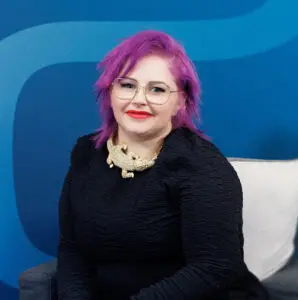Last week was Mental Health Awareness week, with a particular focus on loneliness. Loneliness affects people of all ages, but older people and people with chronic health conditions may be particularly at risk. How can designers of digital products respond to these groups – and make products that might help them? Charli Edwards, creative director at LoveThat, part of BECG Group, went on a personal journey with her own grandfather to find out.
We know loneliness often leads to depression, anxiety and a wide range of mental health issues. For the elderly or disabled, that lack of connection can amplify the feeling of isolation and loss of independence. We only needed to turn on the news throughout the pandemic to hear heartbreaking stories about how those living in care homes were being impacted by the lack of face-to-face contact and limited availability and knowledge in the use of digital tools such as video calls. But this isn’t a new problem.
Age, usability and loneliness
According to Nayyara Tabassum and the Centre for Aging Better, “in 2019, of the 4 million people in the UK who have never used the internet, 94% were aged 55 and over, 84% were over the age of 65, and 62% were over the age of 72.”
There’s a growing number of apps, products and gadgets out there. Many of these ‘popular’ products lack a deeper level of usability to assist those less confident or able in the use of technology to communicate. Past the age of 60, the adoption of technology and digital products decreases sharply. That’s partly due to a fear of learning something new, the complexity of products they have been exposed to and cost.
A very personal user test
Enter Geoff, 90 years old, living alone and a self-proclaimed technophobe. Geoff is my grandfather. He’s a confident, socially-capable individual, who was, like many others affected by the pandemic and the loneliness that came with it, classified as ‘vulnerable.’
As an uncontrollable ‘problem-solver,’ I became interested in his perception and appetite for digital communication tools and how we can evolve digital solutions to better accommodate those more wary of embracing technology in an effort to build independence and combat loneliness.
Armed with tea and cake, I interviewed Geoff to see how much he really knew about the technology available to him, whether that’s online, traditional or mobile. Using a set of pre-planned questions, I was able to gather insights into the challenges of modern technology for communicating with other people from his perspective.
I asked:
- How do you get in touch with people at the moment?
- Do you use Facebook or video calling?
- If not, why not?
- If you do, what do you like about them? What do you find challenging?
- What do you wish you could do more of when talking to friends and family?
I gave Geoff two devices – one cell phone pre-loaded with WhatsApp and one tablet pre-loaded with Facebook Messenger. On both devices I observed him open a contact, type a message, add an image, start a video call and end the video call.
I closed with a few more questions:
- Did you find it easier on the mobile or the tablet?
- What part of the task did you find easy?
- What part did you find hard?
- Was there anything missing?
Geoff’s experience
Geoff had a real apprehension of the technology. He perceived it as complicated to use, and wasn’t confident in the activity.
Geoff had never tried video calling or text, but was comfortable with sending emails, so some technology-based experience was a plus.
A key insight was around the final question: he found it tricky to pin family down, so would like to be able to set up ‘meetings.’ He struggled with the cell phone much more so than the tablet; the combination of smaller buttons and shaky hands made it difficult to type accurately and led to frustration. He did, however, find it somewhat easier to take photos and send to the contact if minimal text input was required.
The tablet was easier as the screen was larger, but the buttons still felt too small and caused some misspelling. It was also more awkward to take a picture because the size of the tablet itself is considerably larger than the mobile.
So, what can we do as creators to combat loneliness and contribute meaningfully to independent living?
It’s about inclusivity. If you need a core demographic to adopt a product or service, think about how they interact with other demographics. Think less about the masses and more about the minorities when developing digital products that connect and assist communication. Not only could it open up new markets, but you can assist people like Geoff, who at 90 years young wants an easy, independent life that allows him to connect with people on his terms and build his confidence in technology.




